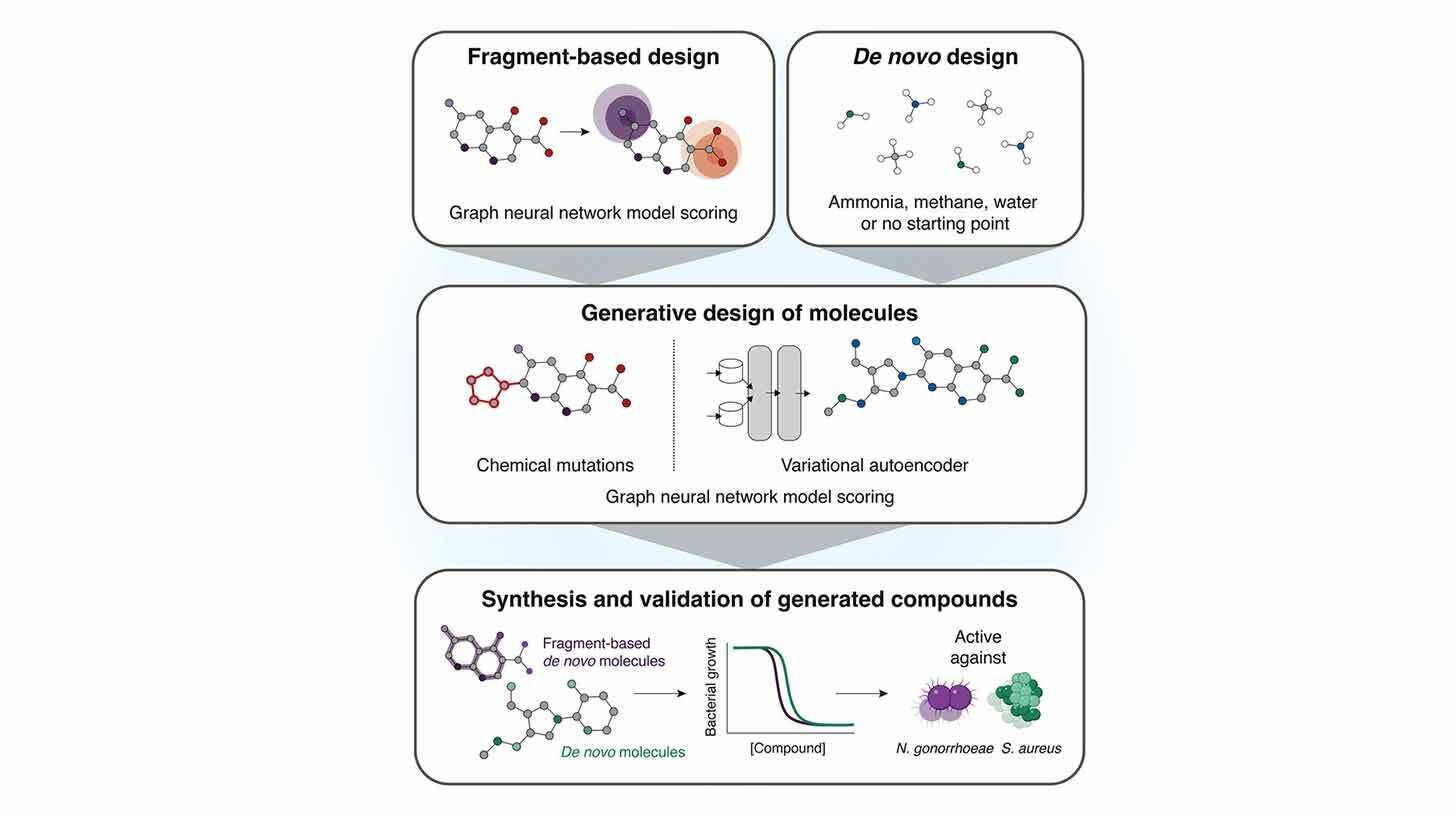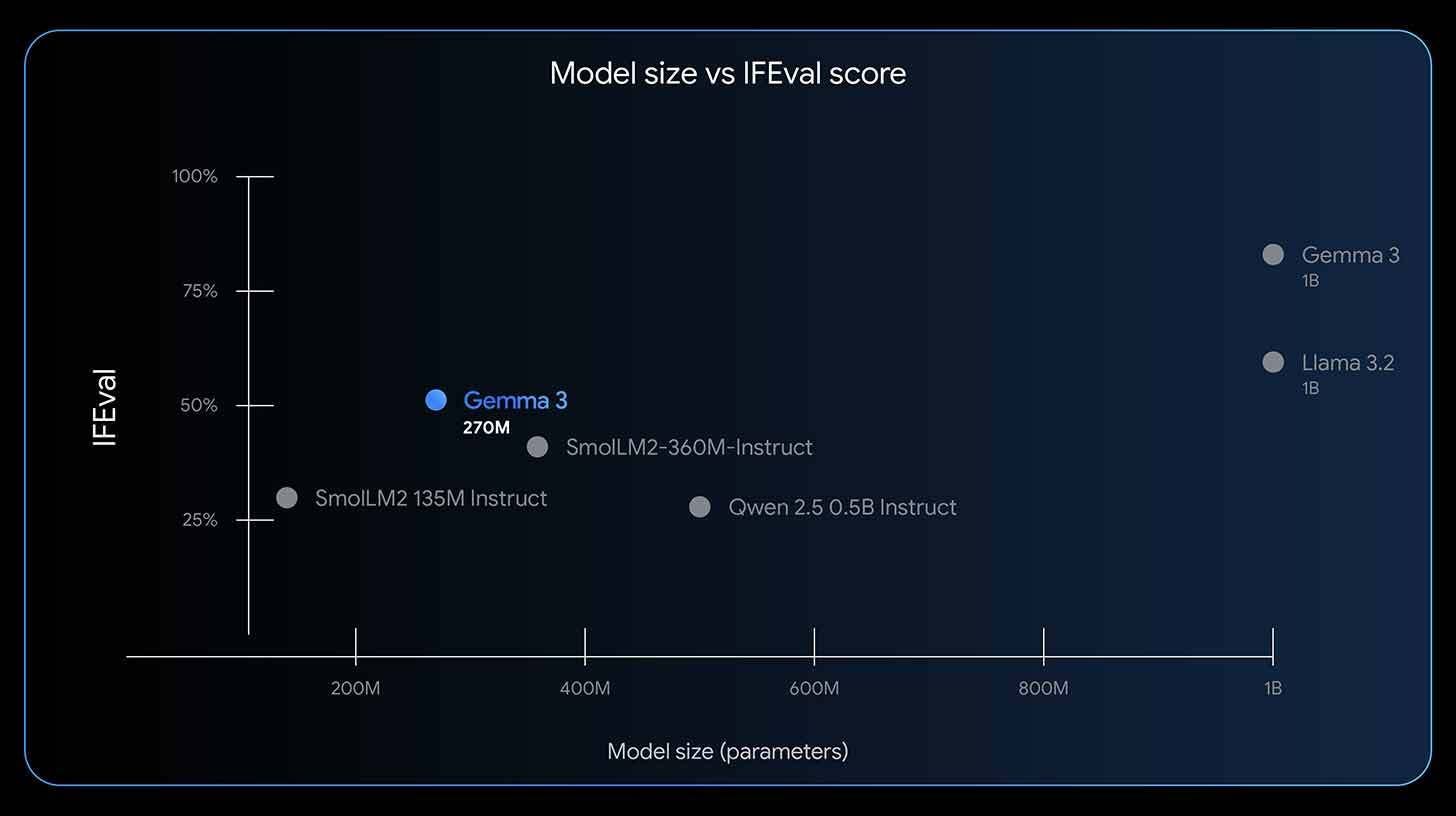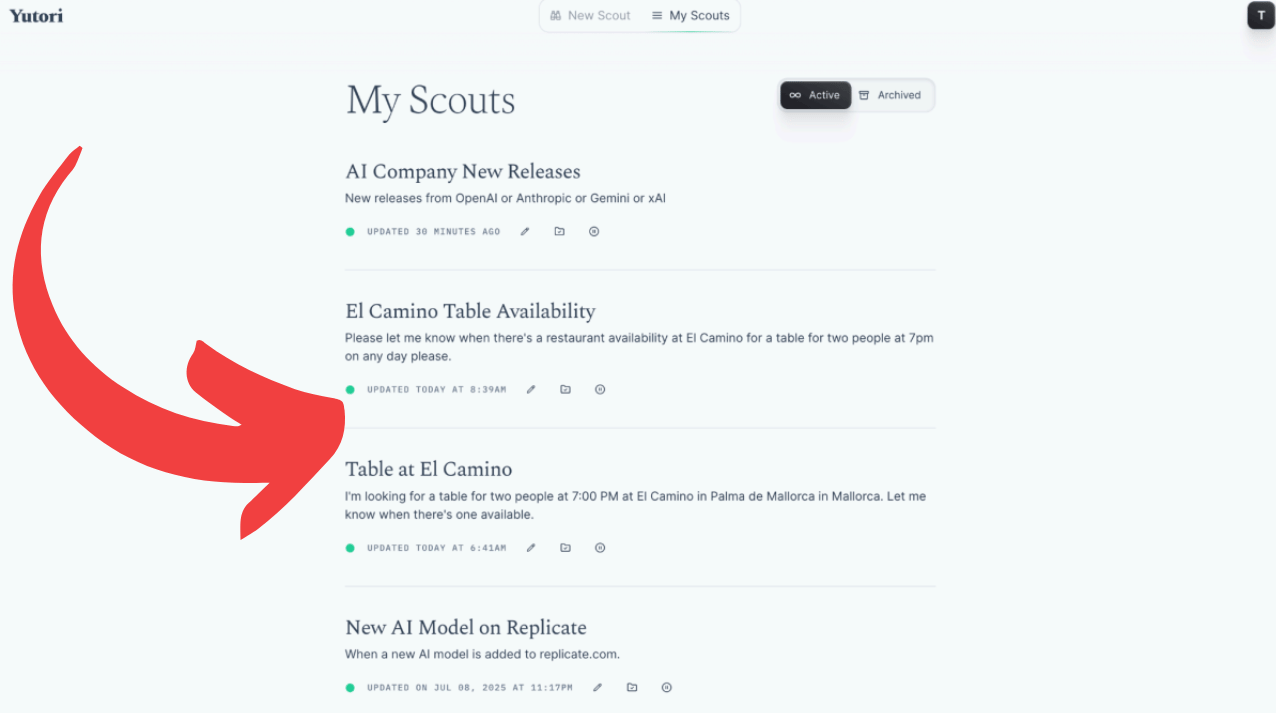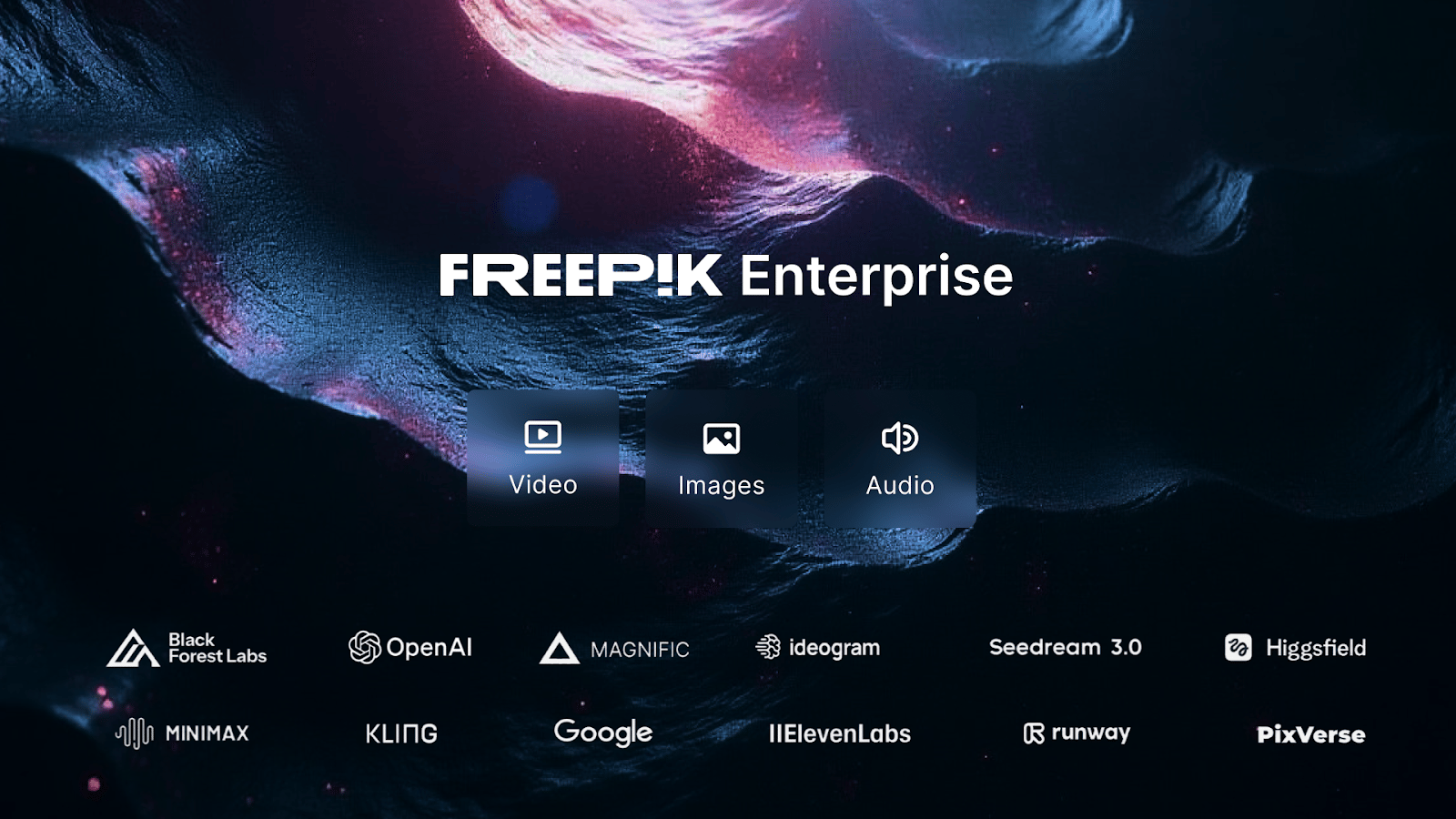Superbugs meet their AI match
PLUS: Patients control AI and robotics with thought
Read Online | Sign Up | Advertise
Good morning, AI enthusiasts. Superbugs have been evolving faster than we can develop drugs to fight them, but MIT just put AI on the case to explore chemical territories humans never even knew existed.
With the system designing two brand-new antibiotics that attack in ways we've never seen before, AI’s new approach could take humanity into what researchers call a “second Golden Age” of drug discovery.
In today’s AI rundown:
AI’s new antibiotics to fight superbugs
Google’s new Gemma model is smaller than ever
Automate web monitoring with AI agents
HTC’s new AI glasses take aim at Meta
4 new AI tools, community workflows, and more
LATEST DEVELOPMENTS
AI & DRUG DISCOVERY
💊 AI’s new antibiotics to fight superbugs

Image source: MIT
The Rundown: MIT researchers just used AI to design two new antibiotics capable of killing drug-resistant gonorrhea and MRSA bacteria, potentially opening a new front against infections that cause millions of deaths annually.
The details:
Scientists trained AI models to generate 36M theoretical compounds, then screened them for bacteria-killing potential and human safety.
The algorithms produced two promising drugs (named NG1 and DN1) that attack bacterial cells through mechanisms never seen in existing antibiotics.
Both compounds cleared infections when tested in mice, with DN1 eliminating MRSA skin infections and NG1 combating drug-resistant gonorrhea.
The MIT research team said that AI advances in the drug sector could create a “second golden age” for the discovery of antibiotics.
Why it matters: Bacteria are evolving faster than our current drugs, but MIT's study shows that AI can navigate unexplored chemical territories that human researchers might never consider, potentially unlocking approaches that move antibiotic discovery from a game of catch-up to more proactive design.
TOGETHER WITH FREEPIK
💡 Creative AI tools for large teams
The Rundown: Freepik Enterprise gives your team access to AI-powered tools for creating and editing images, videos, and more—using multiple models tailored for different creative needs. Enjoy legal peace of mind, flexible admin controls, and unlimited users—trusted by 700K paying customers.
The complete enterprise package includes:
All AI tools in one place, with access to models like Runway, Veo, Kling, and more
Unlimited users with credit-based pricing that scales efficiently with usage
Legal indemnity included, protecting against IP claims on commercial AI content
SSO and admin controls with enterprise-grade security and compliance standards
Learn more about the platform trusted by 700,000 paying customers.
🤏 Google’s new Gemma model is smaller than ever

Image source: Google
The Rundown: Google released Gemma 3 270M, an even smaller version of its open-source model family, which can run directly on smartphones, browsers, and other consumer devices while remaining efficient and capable at the same time.
The details:
Gemma 3 270M outperforms similarly small AI systems at following instructions, despite being a fraction of the size of most current models.
In internal tests, the model handled 25 conversations on a Pixel 9 Pro while consuming less than 1% of the battery, demonstrating extreme efficiency.
Developers can also fine-tune it in minutes for specific tasks, with Google demoing a Bedtime Story Generator as an example of an offline creative task.
Why it matters: As intelligence continues to scale, so do the capabilities of ultra-efficient, small models, making AI able to run on any consumer device. With Liquid AI’s LFM2 release also pushing the on-device model competition forward, some massive gains are being seen in the smallest corner of the AI world.
AI TRAINING
🔗 Automate web monitoring with AI agents

The Rundown: In this tutorial, you’ll learn how to use Yutori Scouts, an AI web monitoring agent that watches for specific updates online and alerts you via email. No more refreshing pages or manually checking for changes.
Step-by-step:
Enter your request in the Yutori homepage input box (e.g., “New releases from OpenAI or Anthropic or Gemini or xAI”) to create your Scout
Choose how often you want alerts — instant, daily, or weekly — then click Start scouting to activate it
View and manage all your active Scouts from the “My Scouts” dashboard, where you can edit, pause, or delete them anytime
Check reports sent to your email or in-app, each with clear findings and a direct link to the source for quick action
Pro tip: Use Scouts for time-sensitive opportunities like reservations, product restocks, or industry news, and pair with automations to get updates.
PRESENTED BY FIDDLER
🎧 The blueprint for production-ready enterprise AI agents
The Rundown: Fiddler AI's 13-minute podcast breaks down how to build agentic systems that deliver real value - sharing the observability patterns that separate demos from production-ready enterprise deployments.
In the episode, you’ll learn:
How to improve agent performance and diagnose the root causes of agent failures
Key patterns to monitor, from reflection loops to tool usage and planning accuracy
Examples of enterprise agentic systems and applications
HTC
😎 HTC’s new AI glasses take aim at Meta

Image source: HTC
The Rundown: Taiwanese giant HTC introduced Vive Eagle, a new line of AI glasses that let users choose between AI assistants and feature strong battery life, advanced translation capabilities, and other features to challenge Meta’s Ray-Ban dominance.
The details:
Users can switch between AI models from OpenAI and Google for the wearable’s assistant, activated via a “Hey Vive” voice command.
Built-in real-time photo-based translation works across 13 languages through an embedded camera, with all data processed locally for privacy.
Other features include a 12 MP ultra-wide camera, extended battery life, video recording capabilities, music playback, and more.
The wearable will currently only be available in Taiwan, with a starting price of $520 compared to Meta’s $300 Ray-Bans.
Why it matters: Zuck pointed to “personal devices like glasses” as the computing devices of the future, and competitors are emerging to compete with Meta's successful Ray-Ban (and now Oakley) lines. With styles gravitating towards normal, subtle integrations, it feels like a product close to breaking through to the mainstream.
QUICK HITS
🛠️ Trending AI Tools
⚡️ Gemma 3 270M - Google’s compact, hyper-efficient new open model
🤖 Anything - An AI agent for making products without coding
🌎 Hunyuan Gamecraft - Create interactive game worlds from a single image
✈️ Flight Deals - AI-powered search tool within Google Flights to find bargains
📰 Everything else in AI today
DeepSeek’s long-awaited R2 model is reportedly being delayed due to training issues with Huawei’s Ascend chips, after rumors of an August release circulated earlier.
Meta’s Superintelligence Lab added three more OpenAI researchers, with Alexandr Wang revealing Edward Sun, Jason Wei, and Hyung Won Chung have joined the team.
Cohere announced a new $500M funding round at a $6.8B valuation, also adding Meta’s VP of AI Research, Joelle Pineau, as its new Chief AI Officer.
T-Mobile parent company Deutsche Telecom officially launched its AI phone and tablet in European markets, which come integrated with Perplexity’s assistant.
Meta is facing backlash after a report revealed an internal document that outlined permitted AI outputs, which included romantic conversations with kids.
Google announced that its Imagen 4 image generation model is now GA in the company’s AI studio, with up to 2k resolution and a new fast model for quicker outputs.
Former Twitter CEO Parag Agrawal launched Parallel, a new startup creating a web API optimized for AI agents as users.
COMMUNITY
🤝 Community AI workflows
Every newsletter, we showcase how a reader is using AI to work smarter, save time, or make life easier.
Today’s workflow comes from reader Michael C. in Phoenix, AZ:
"As a Creative Marketing Manager, AI has become part of my daily toolkit: ChatGPT Pro, and Grok for market research; 4o, Ideogram, Imagine, and Magnific for images; Higgsfield for video, and more. What’s been most surprising is the range of reactions from colleagues. Some are curious, a few are starting to experiment, but many remain hesitant or even resistant. I see the potential every day in how much faster and more polished my work has become, and I hope more of the team will discover those same benefits in their own roles."
How are you using AI? Tell us here.
🎓 Highlights: News, Guides & Events
Read our previous newsletter: Apple plots AI comeback with home robots
Today’s AI tool guide: Automate web monitoring with AI agents
Watch our last workshop: AI agents for Customer Service
See you soon,
Rowan, Joey, Zach, Shubham, and Jennifer—the humans behind The Rundown

Stay Ahead on AI.
Join 1,000,000+ readers getting bite-size AI news updates straight to their inbox every morning with The Rundown AI newsletter. It's 100% free.







